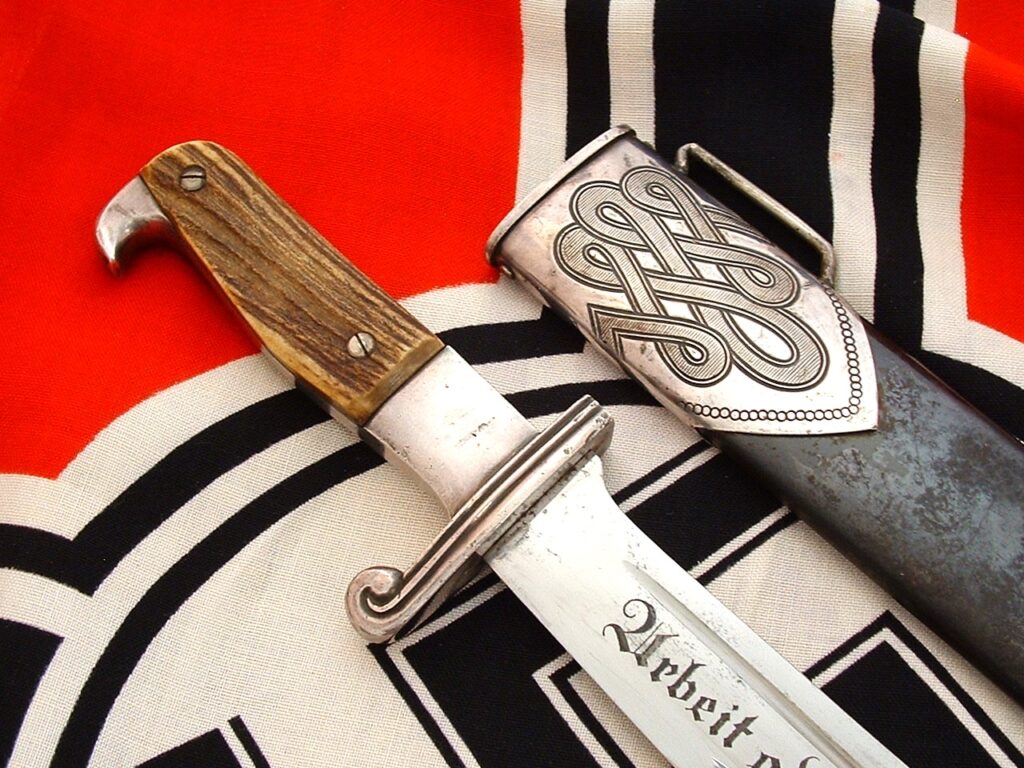
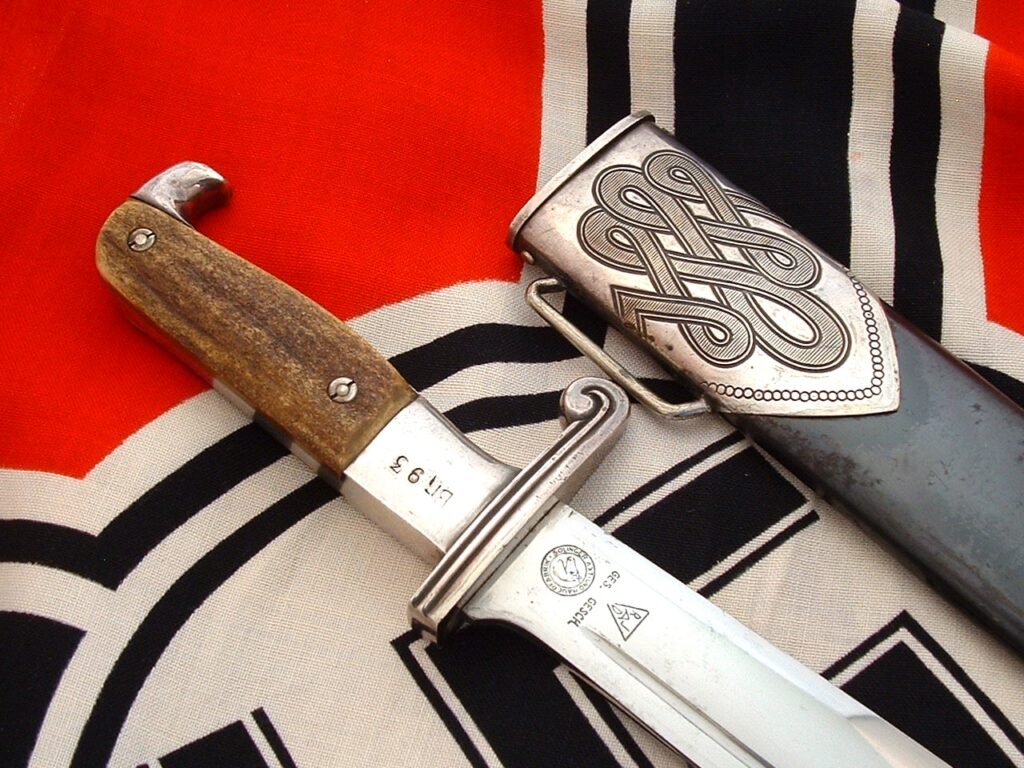
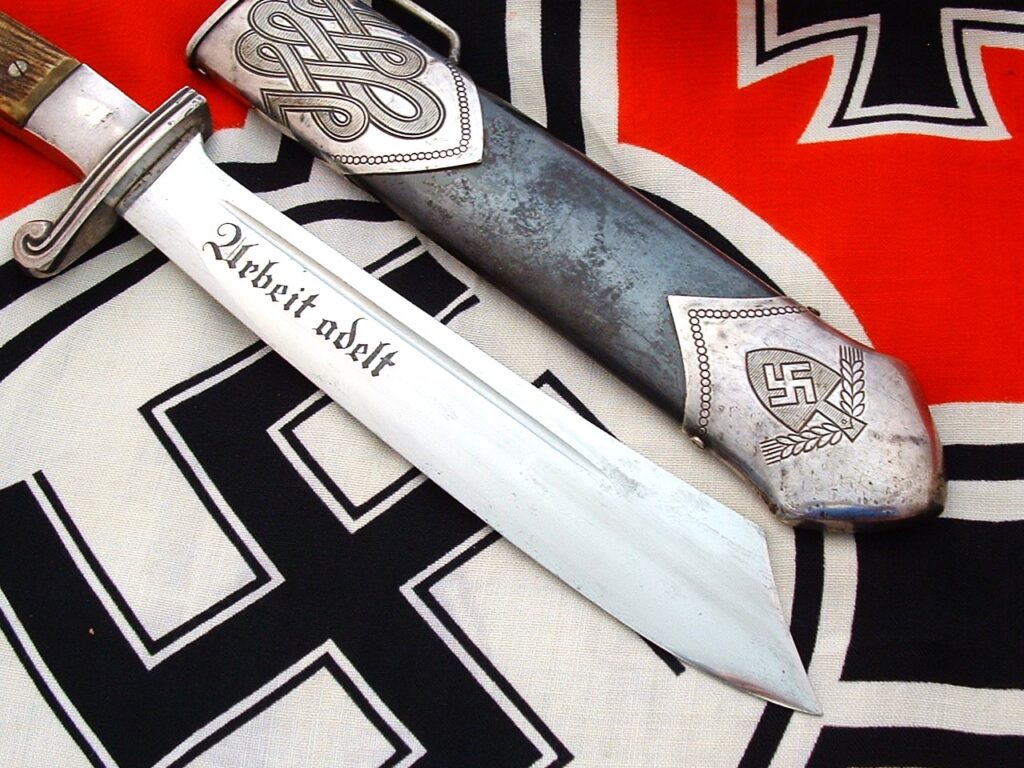
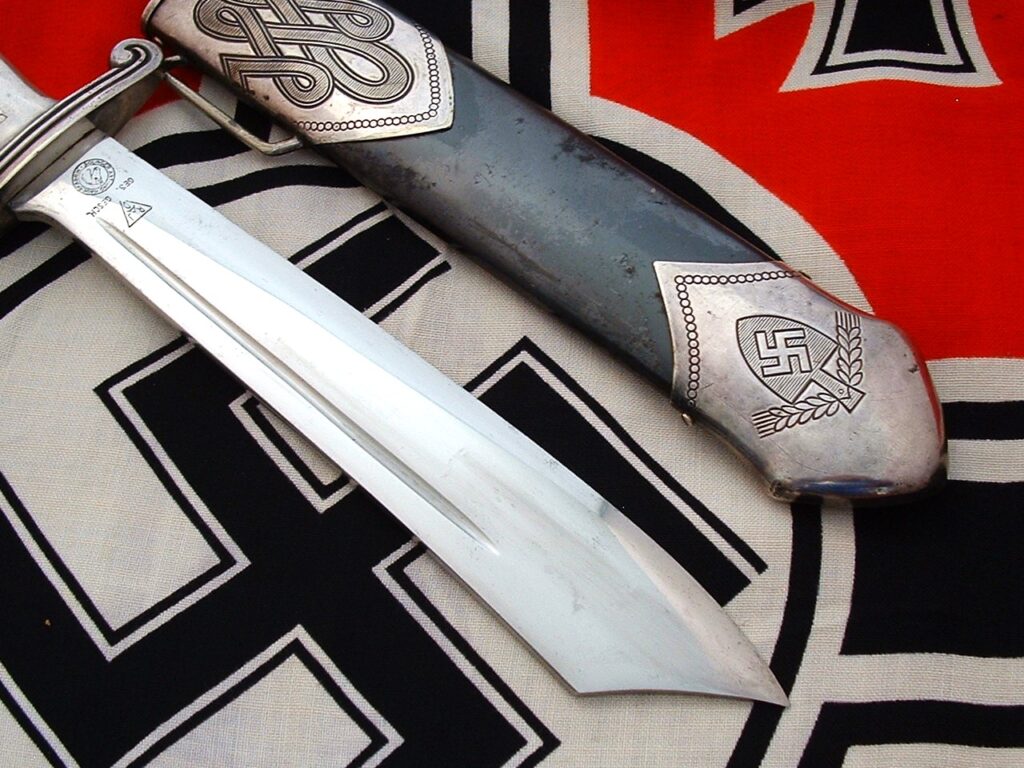
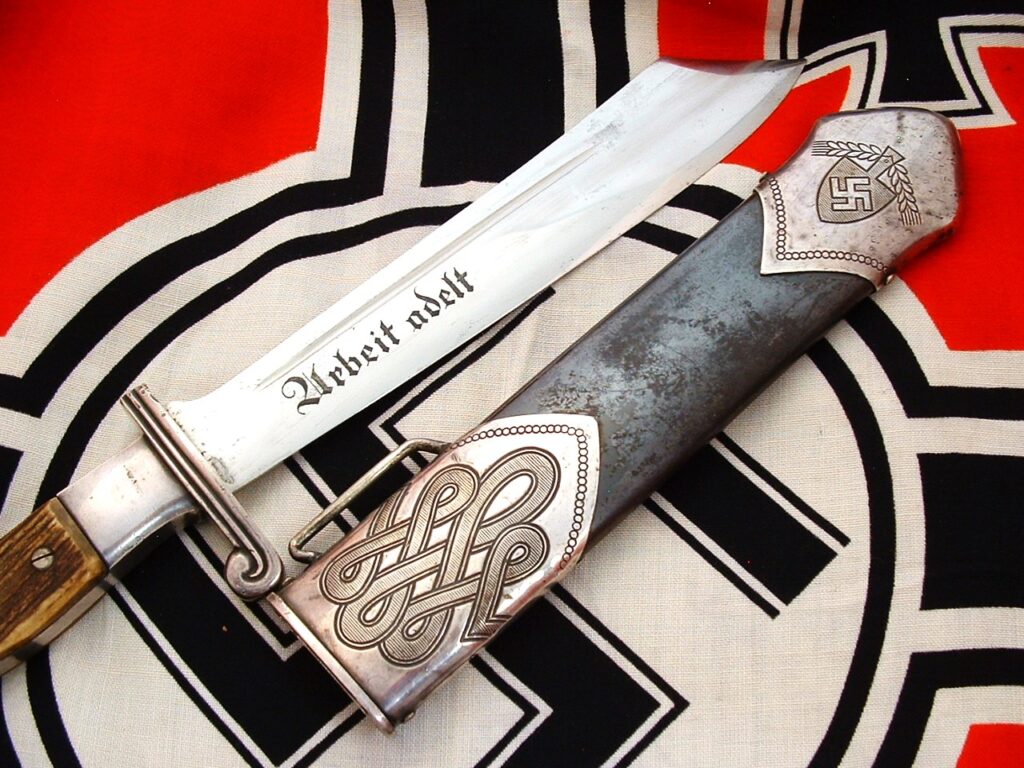

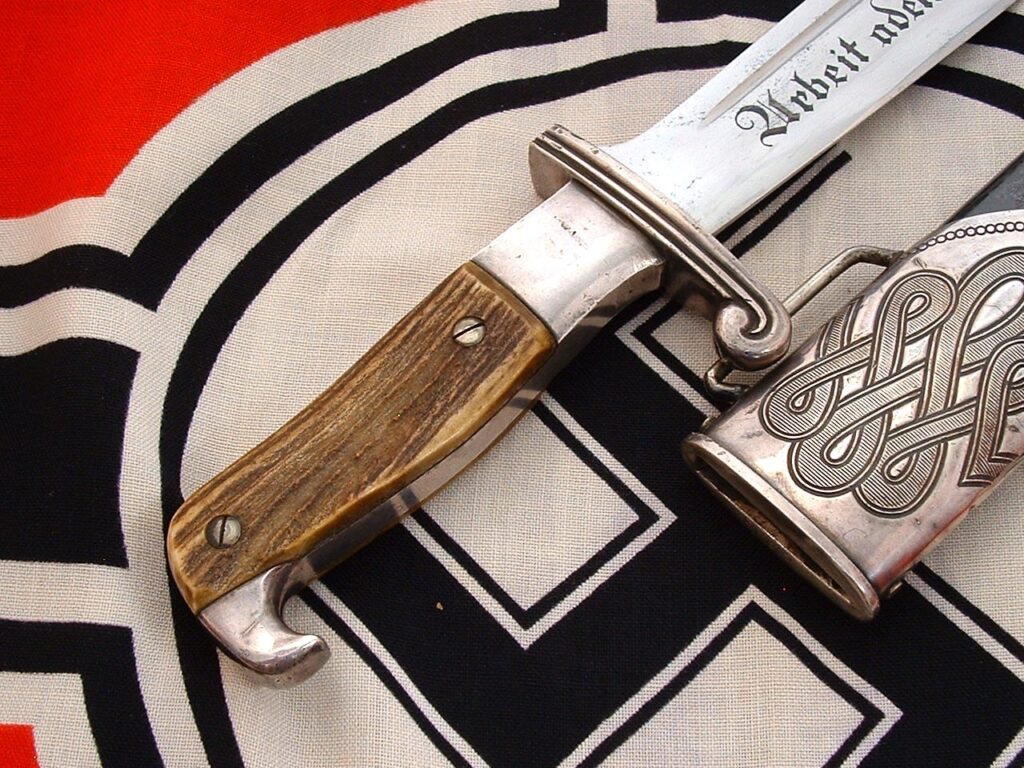
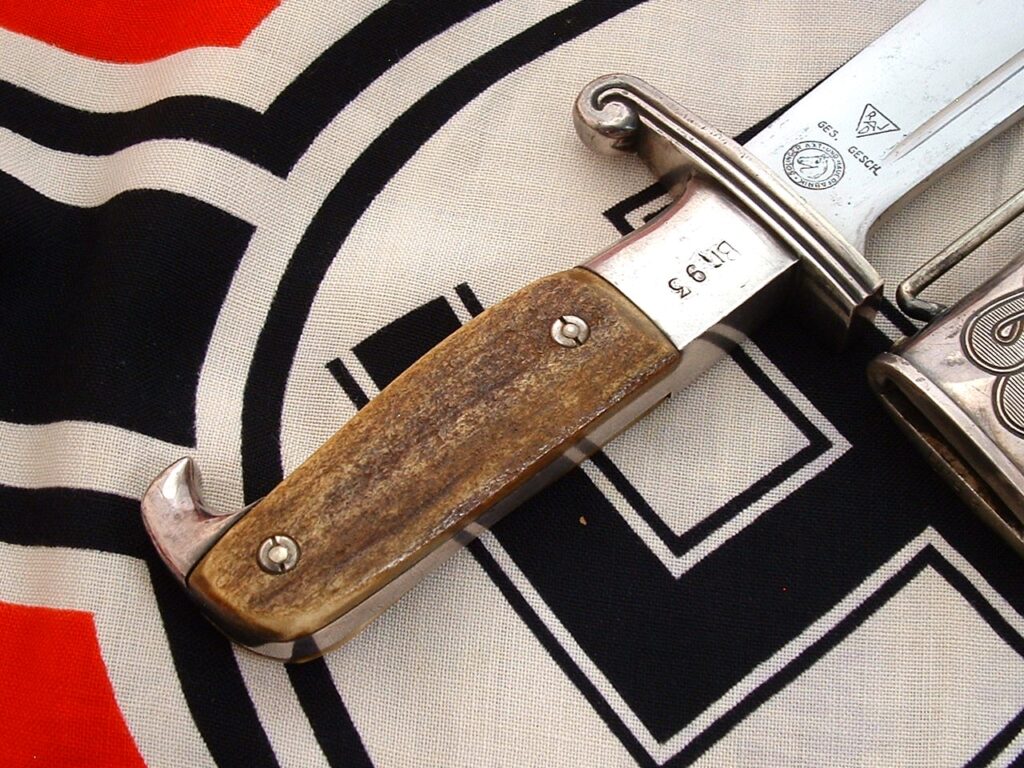
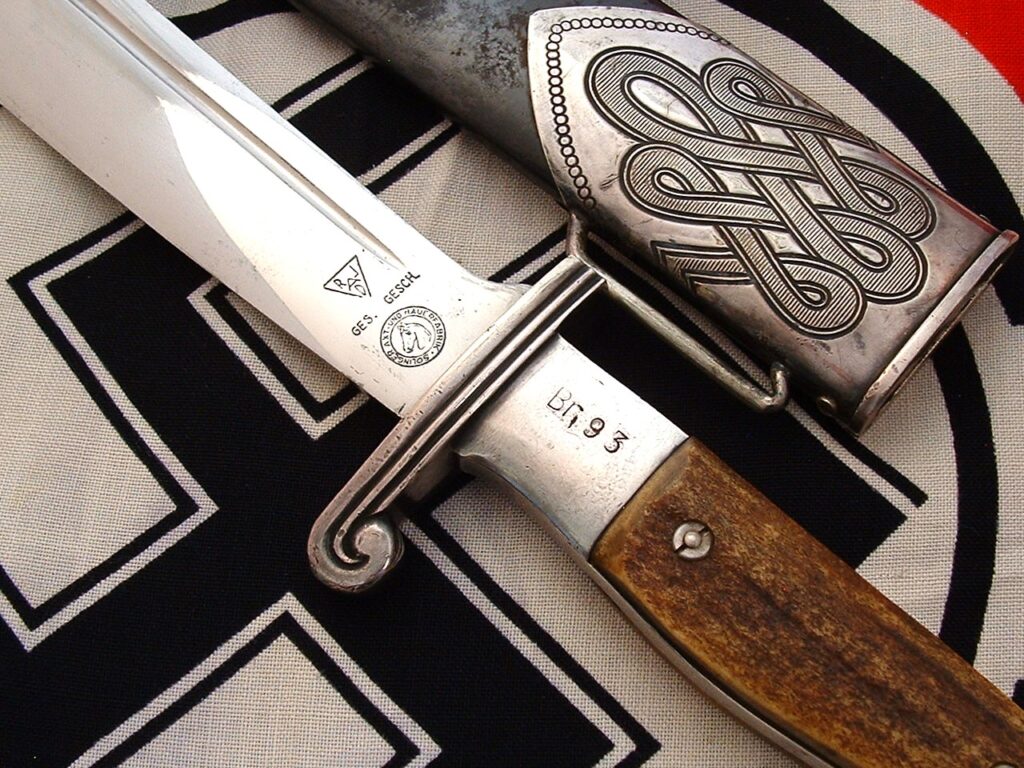
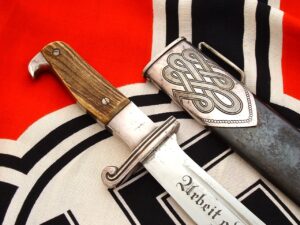
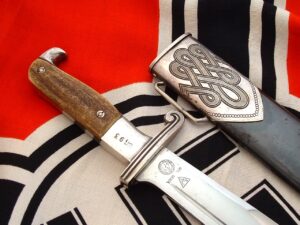

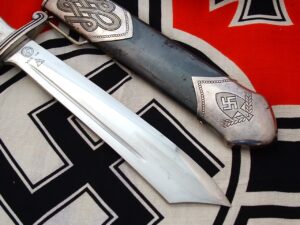
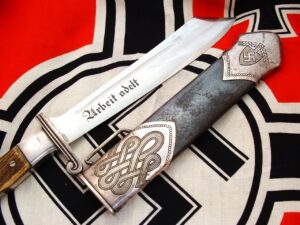



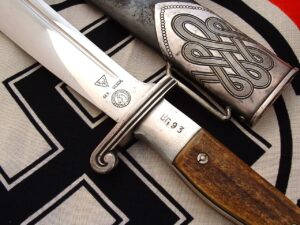
Early Rare Maker RAD Hewer by AXT – D1090
These early Labor Corps hewers are quite desirable for a couple of reasons. First, they are manufactured with quality nickel hilts as this one is. And secondly, they are equip with blued scabbards which are so infrequently encountered. Here is a decent example in this offering, with everything you are looking for in regards to the above.
An attractive hilt assembly begins the description of this heavy RAD cleaver. The stag grip plates are nicely matched, cut and trimmed with precision, and tightly secured to the spine of this hewer. The stag is in good shape, void of any breakage, chips, or damage. As mentioned, these early hewer hilts are heavy nickel silver, as is the one to this edged weapon. For an actual field used service tool as these cleavers were sometimes utilized, the fore and aft spines, eagle’s beak, and ferrule sections have held up well on this labor corps hewer. Typical for these early examples, the reverse of the ferrule is proper stamped Br. 93. That same number is on the throat of the scabbard as well.
Though it shows some use from daily wear at times, the scabbard to this RAD is in good shape. The shell remains straight, void of any hits, splits, or dings, and with a period blued finish which still remains decent at 85%. As mentioned, it is quite rare to encounter a hewer exhibiting this process, as painted scabbards quickly became the norm shortly after the introduction of these edged weapons in 1934. Both upper and lower massive fittings are tight to the shell, displaying the typical bumps of a 2 ½ pound implement being swung around by the labor corps member wearing it at work.
And finally the blade. It remains straight, full length, void of any major sharpening scars, tipping, buffing, or cutting edge chips. The surface has a little bit of age like all of these cleavers do. But what the heck, the condition truly is the exception rather than the rule for such a very early example. The dark motto is absolutely stunning, as this firm evidently use a special paint on their etches to accent the Arbeit adelt slogan. We see this very exact process with a few manufactures of early SA daggers, namely Kober, Malsch, Heller, and a couple of other firms. Lastly, on the reverse is the trademark rarely associated with any edged weapons manufactured during the period. That being the horsehead logo of the Axt Hauerfabrik edged weapon company.
A nice early RAD hewer that someone will enjoy adding to their collection. $1450.00